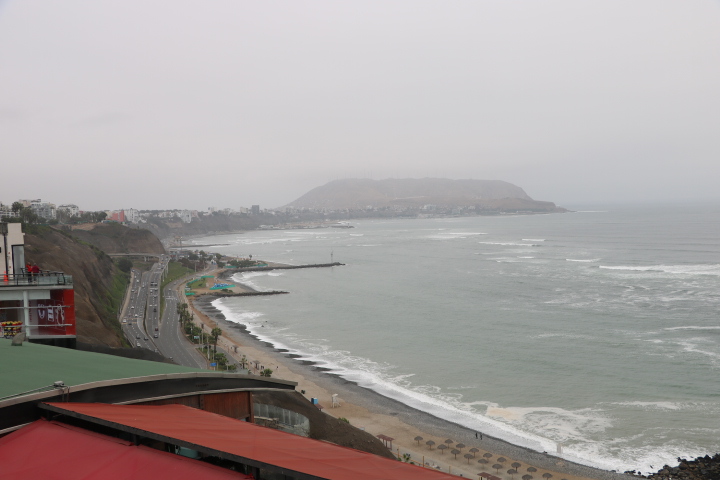We departed Manchester on time at 05:55 on our flight to Paris Charles de Gaulle airport. It was interesting because we have never flown on the new Airbus 220. Arriving early we had a leisurely transfer to our Lima flight on a Boeing 777-300 extended range which enabled us to fly the 6,515 miles nonstop.
We took a great circle route over the Atlantic and Caribbean which lasted for 8 hours but towards the end to this part of the journey we had terrific views of the islands of Dominica and St. Lucia.
Close to, and crossing the Equator, we saw massive, towering cumulonimbus clouds with giant anvils. As the cloud cover broke we saw the ice sculptured peaks of The Andes, the table top Altiplano and the meandering tributaries of the Amazon River. To cap it all were two active, though small, volcanoes.
Lima is situated above a long coastline of crumbling cliffs of clay and possibly glacial deposits because this part of the world has ancient sedimentary basins and these remains may be part of that. We will know more when we explore further. Lima is situated above a long coastline of crumbling cliffs of clay and glacial deposits. We entered the city along the very busy Pacific Coast Highway at the foot of these cliffs, now covered in unsightly netting used to prevent rotational slumping of the cliffs which, when coupled with the fog made from the mixing of the cold air and water of the Humboldt current and Equatorial air and water makes the scene a disappointing one.


The city was founded by Francisco Pizarro in 1535 and became the capital of the Spanish Empire in South America.